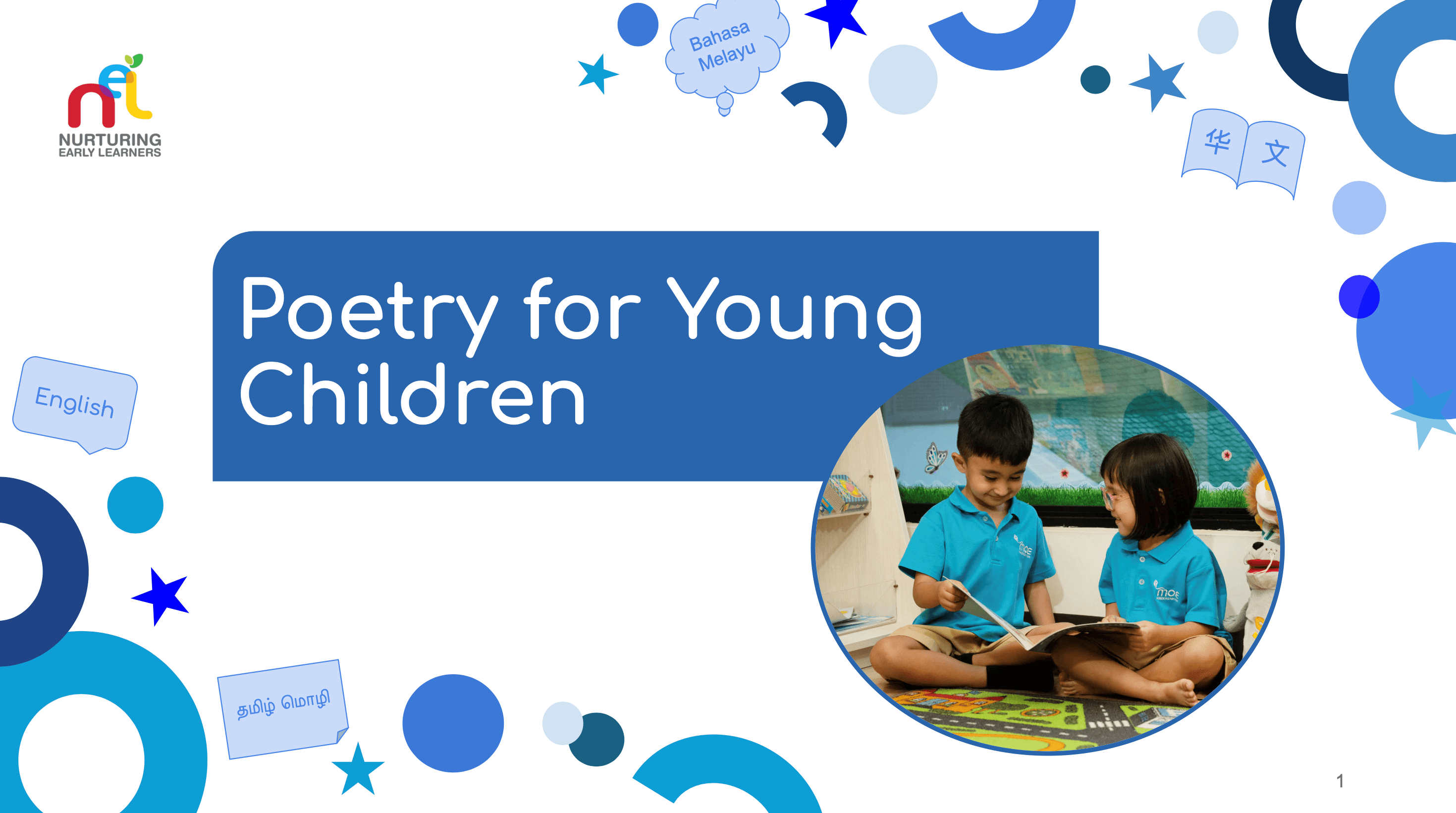Reading
On this page
Reading aloud
You can read aloud to children to develop their interest and positive attitudes towards reading. When reading a story to children, you should:
Sit in a position that allows for eye contact with the children.
Seat the children so that every child gets to see the pictures in the book.
Hold the book so that the text and pictures face the children.
Use facial expressions, volume contrast, different voices for different characters and audience participation to focus and retain children’s attention
You can use storybook reading techniques such as:
Dialogic Reading: You can involve a small group of children in the reading process. The goal is to move them from being a listener to a storyteller. Refer to the five different types of prompts (CROWD) on how to do so.
Shared Book Approach (SBA): You can model the reading process by leading the children in an enjoyable reading experience using a Big Book. This encourages children to participate actively, acquire listening, speaking and reading skills. Use a pointer to point to the words while reading and draw children’s attention to print and print conventions.
Refer to the teaching steps, the example using the book, “What the Ladybird Heard” by Julia Donaldson or the video below to see SBA in action. Here are some tuning-in song lyrics and activity ideas to help you use the NEL Big Books in your classrooms!
Explicit instruction
It is crucial to directly introduce children to the specific aspects of the language, including letters, phonological awareness and vocabulary.
Teaching Phonological Awareness: You can use direct teaching as a form of explicit instruction. This is a systematic approach that scaffolds children’s learning experience to acquire phonological awareness, particularly phonemic awareness.
Refer to the infographic to learn more about the importance of phonological awareness and practical tips on how to teach this skill.
Watch the video below to learn how you can use direct teaching to support children with language and literacy needs.
Adapt these ready-to-use resources in your class.
Teaching Vocabulary: You have to be intentional to select target words, provide both explicit and implicit instruction and give children repeated exposure to the word. Find out how you can help children learn target vocabulary using the “Say-Tell-Do-Play” technique.
.png)
